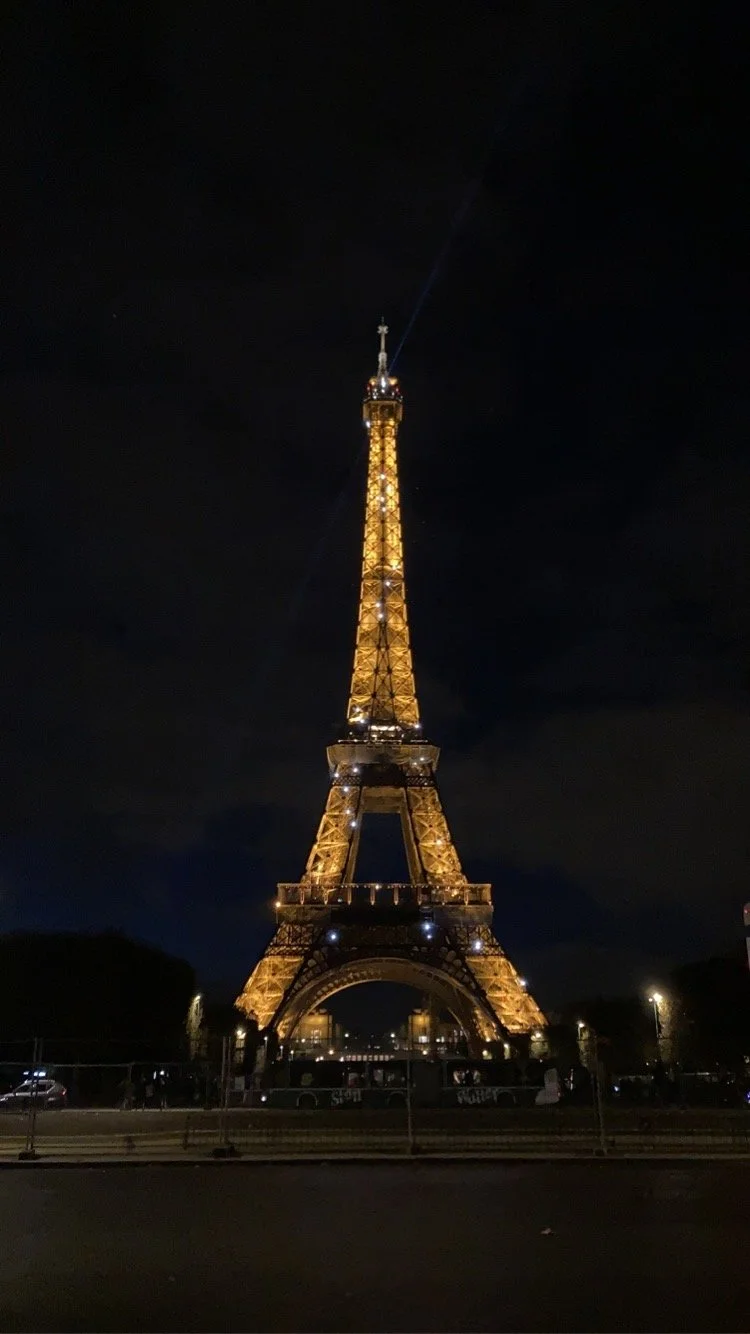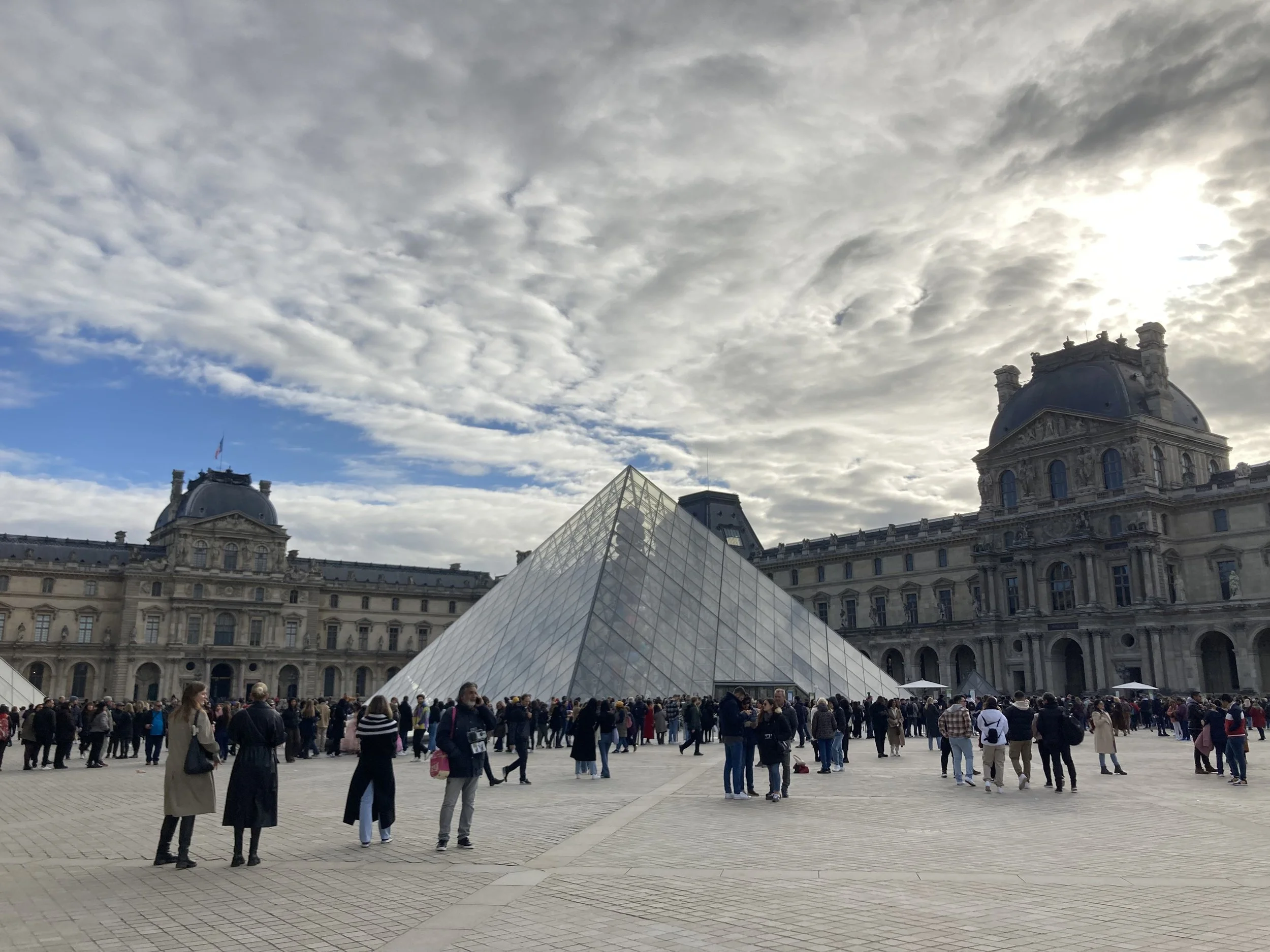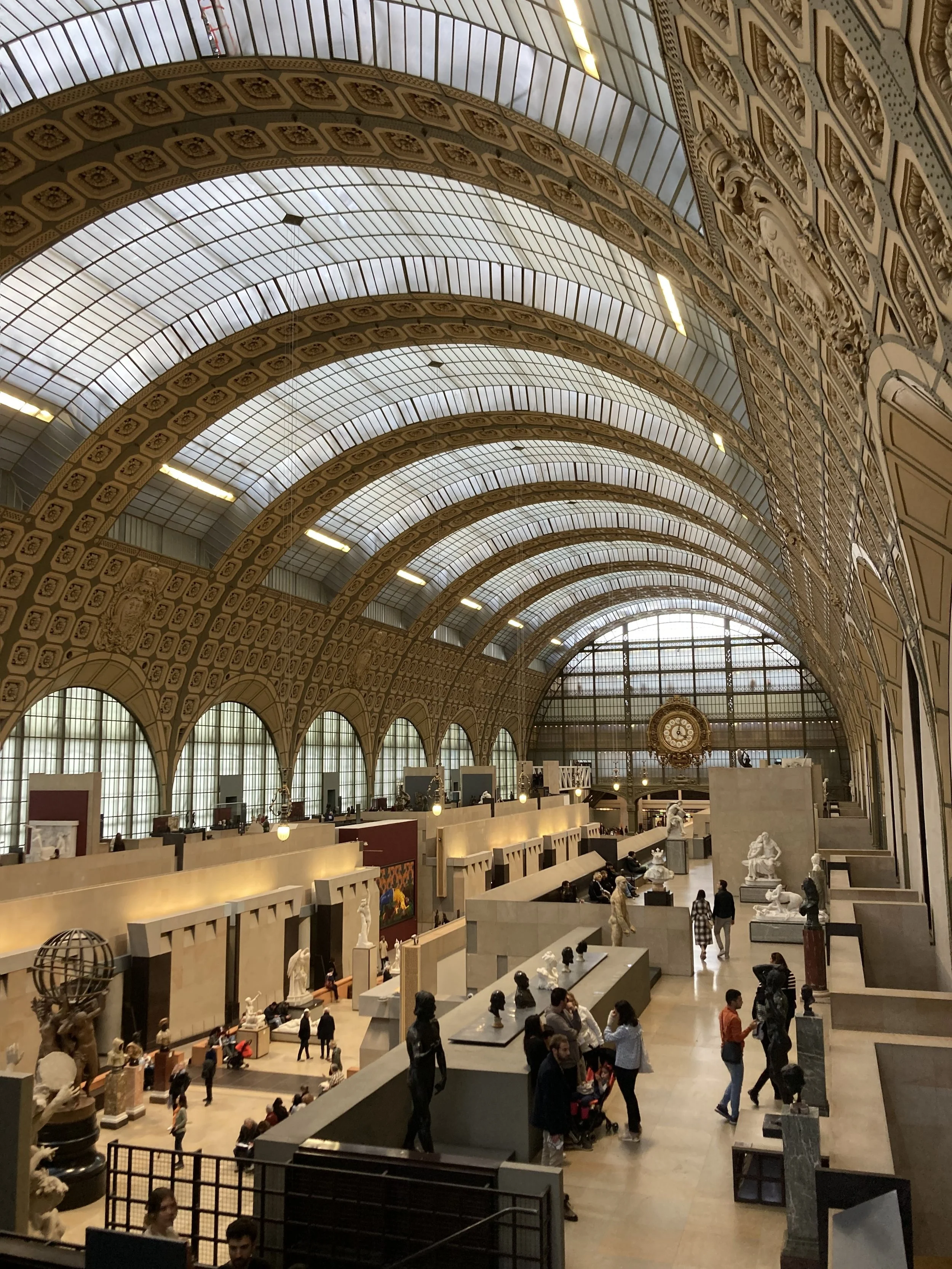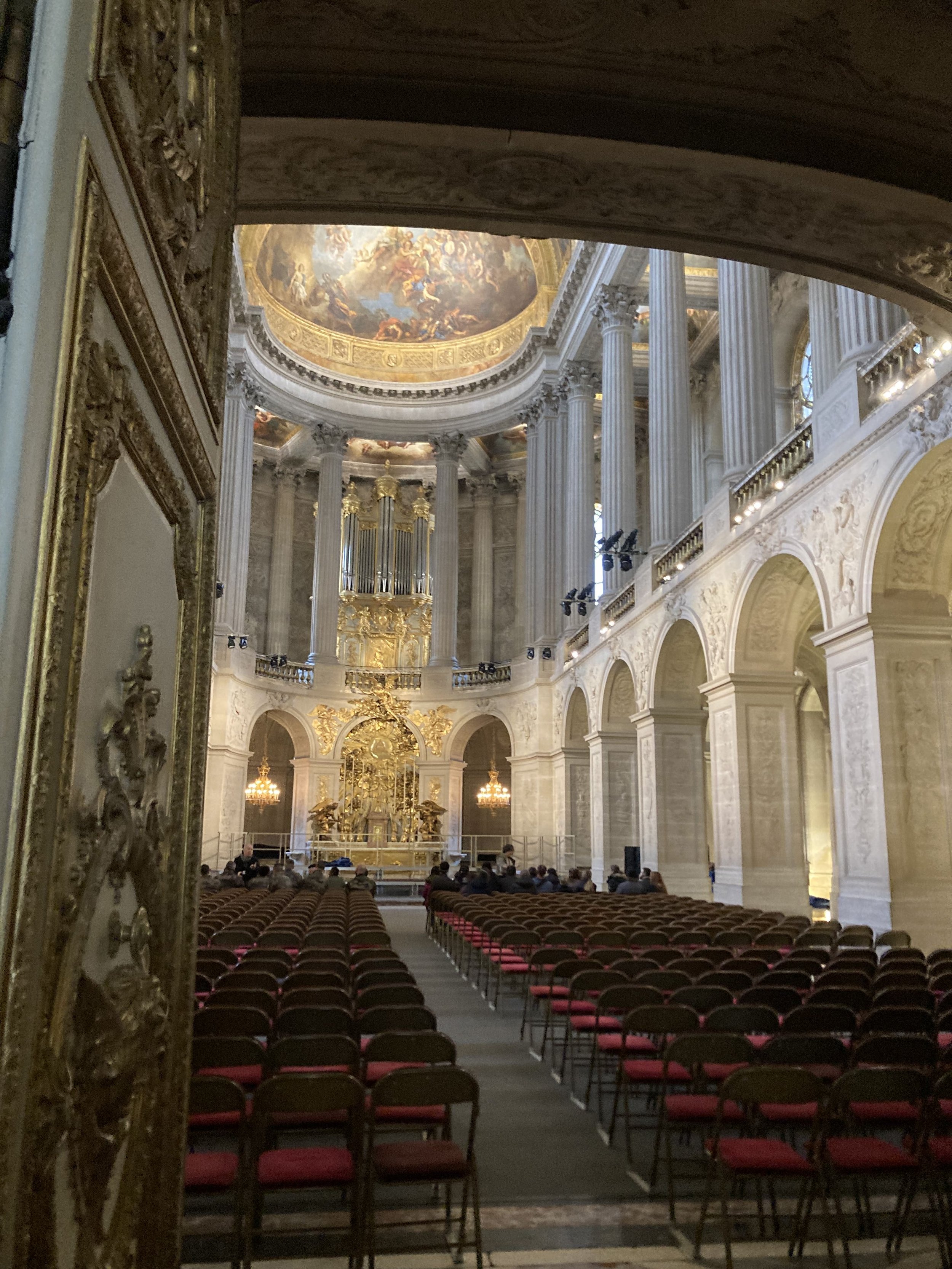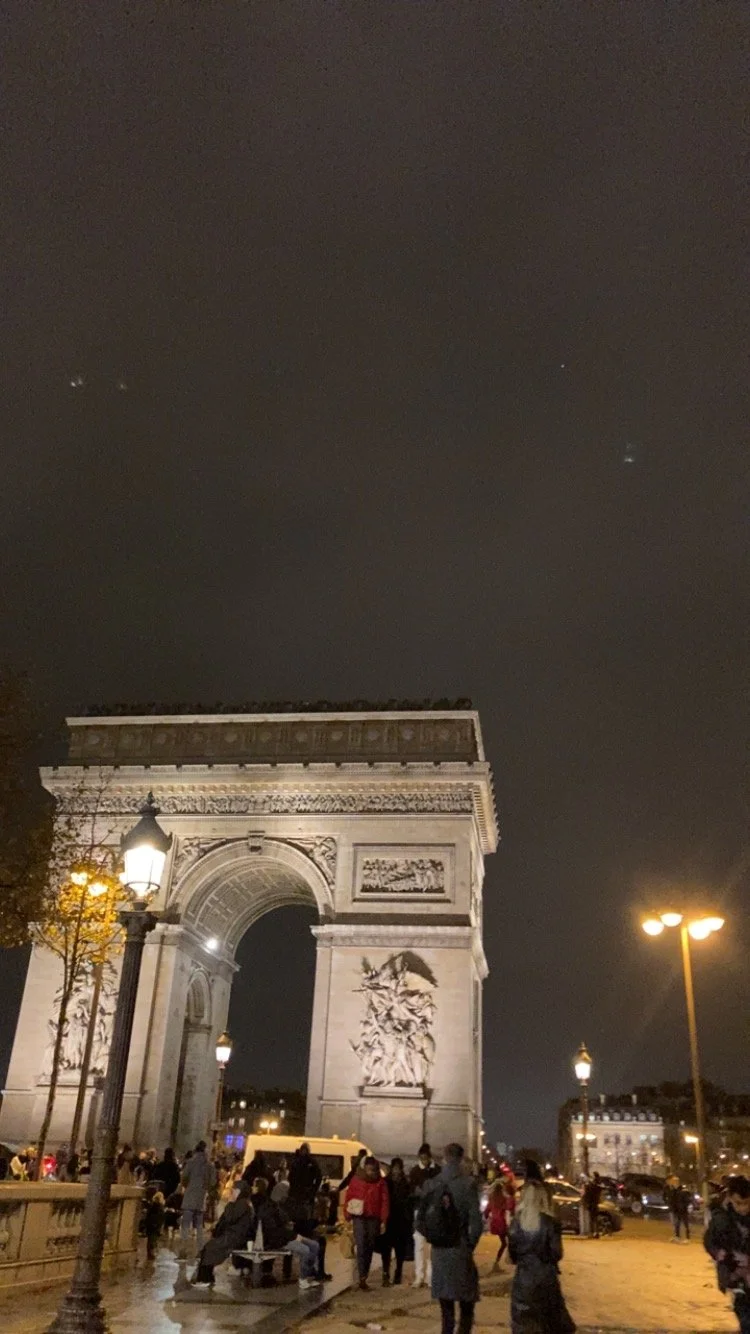By Madelynn Loring, Staff Writer
Paris is simply the place to go in France for Americans. In fact, when I first announced that I was studying abroad, the first thing everyone said was, “In Paris?” I definitely disappointed folks when I said that no, I was going to a smaller city in southern France, unheard of by Americans, called Montpellier. Regardless, I have been so fortunate as to have been able to catch a couple trains to Paris for weekend trips, so I figured I would share my experience with certain popular attractions, and offer my insight on whether they’re worth it, or too touristy.
Eiffel Tower
So, let's start with the obvious, the Eiffel Tower. You can’t go to Paris and not go see it. At least, that's what most folks say, and I would agree to a certain extent. Especially if you have been studying French for a while, seeing the Eiffel Tower is a huge moment, and I don’t want to discredit that. However, it does get old pretty quick.
Photo by Madelynn Loring
It is definitely worth it to at least go to the park in front of the base where you can get a good view, and take some nice pictures. After all, how are you going to show the internet that you were in France if you don’t have a picture with the Eiffel Tower??? If you do want to go to the top, you have got two options. Either book your tickets online 60 days in advance (yes, they do sell out that fast, even in the off season) or wait in line onsite. I have always chosen the latter option. If you choose to do the same, ensure that you go right as it opens. There will still be a line, but the wait shouldn't be longer than 30 minutes.
Also, (and this is just a general statement for all of France) be cautious of what they call “aggressive solicitors.” These are going to be the folks standing outside of all of the major tourist attractions selling Eiffel tower keychains, berets, and the like. They are not necessarily a scam, or a way to pickpocket you, but they can be quite uncomfortable and difficult to escape, so just be aware.
Speaking of things to be cautious of, the one other common thing you might experience in France is folks approaching you with clipboards asking for a signature. At least, from the American perspective, that is what it seems like is happening. What it actually is is people asking for donations for whatever cause they represent. I am not sure if these are legitimate, or scams, but it is very easy to sign your name on a paper thinking it’ll get them to leave you alone, and then get asked for every bill and coin in your wallet. Similar to the “aggressive solicitors,” it is very difficult to remove yourself from the interaction once you have engaged, so a simple “no” if they try to ask you for a donation is the simplest option.
Museums
Moving on from Paris’s most touristy experiences to the second most, here's a little dive into some of Paris’s museums. This is not a comprehensive view by any stretch of the imagination. Paris is a lot bigger than many expect, and there is practically a new museum every block. It is also worth noting that not all of these attractions are necessarily museums by name, but they have the same general purpose of going through and looking at neat stuff.
The Lourve Photo by Madelynn Loring
So without further ado, let's start with the creme de la creme of Paris museums: The Louvre. Everyone knows this one. You know, the one with the glass pyramids where Mona Lisa lives? That one. The Louvre is the second most popular tourist attraction in Paris, but don’t let that make you cross it off your list as overrated.
The Louvre is absolutely massive. I have visited for a full day three times in the past four months, and I still feel I have barely scratched the surface of what the Louvre collections have to offer. For this reason, the Louvre is really a one-size-fits-all museum. If you’re an art buff, you’re set. Ancient egypt? There’s practically a whole floor dedicated to that. More into decorative arts? Stop by the recreation of Napoleon's apartment, complete with car-sized chandelier.
They have exhibitions of things from all over the world, from prehistory to present day, so if the Mona Lisa doesn’t really tickle your fancy, rest assured you’ll find something that does. And a little note on the Mona Lisa: she might be famous, but she ain’t worth it. It’s going to take you about 20-30 minutes to make your way through the crowd, just for a picture you aren’t going to look at again. Believe me, I’ve done it.
Sculpture section of Musee d’Orsay
Photo by Madelynn Loring
Another popular art museum in Paris is the Musee d’Orsay. Built into an old train station, this museum hosts one of the most impressive collections of sculptures and impressionist art in the world. They have works by Van Gogh, Monet, and Renoir. This is also home to the famous Little Dancer sculpture and Dancer on Stage (The Star) by renowned artist Edgar Degas.
Or, if paintings are not really your thing, you can walk through the main hall, which hosts sculptures from Greek Antiquity to contemporary works by artists such as Kehinde Wiley, who did President Barack Obama’s last presidential portrait. Also, Musee d’Orsay is much less overwhelming than the Louvre, both in terms of size and business. This makes it a great stop for folks who want a taste of a wide array of art, but aren’t willing to face the chaotic labyrinth that can be the Louvre.
Entrance to Petit Palais Photo by Madelynn Loring
If you’re looking to live a little more like the locals, or you want a taste of Parisian art museums, but not so much that you want to spend money on an entry ticket, I strongly recommend the Petit Palais. Located on the main road of Paris, the Petit Palais (as suggested by its name) is a small art museum built into a small offshoot of the Grand Palais, built for the Paris Universal Exhibition in 1900.
This museum has a number of small collections, including traditional European paintings, decorative arts, and prehistoric artifacts. The ceilings are also painted with religious scenes, much like those in Italian cathedrals, but in a more contemporary style. The Petit Palais’s biggest draw, however, is that it is entirely free to enter, with no reservation or ticket required, making it the perfect stop for a traveler on a budget.
Chapel inside Palace of Versaille
Photo by Madelynn Loring
Now that we’ve covered some popular traditional art museums, let’s dive into some of the less conventional museums Paris has to offer. While it isn’t exactly in Paris proper, I couldn’t write about Paris without mentioning the Palace of Versaille. Just a short train ride from central Paris, Versaille is a must see. A true testament to Grande Epoque opulence, the Palace of Versaille was initially built by order of Louis XIV, the sun king of France. It was occupied by Louis XVI and his wife, Marie Antoinette, when it was stormed during the French Revolution in 1789. It's certainly a tourist destination, but the rich history and decorative architecture throughout the entire property makes it a great day trip. However, make sure you plan for inclement weather; it is a massive estate, and you’ll be walking a lot, so be sure to pack an umbrella and good, water-proof walking shoes.
Concert hall of the Opera Garnier
Photo by Madelynn Loring
If you want more of the glamor and elegance of Versaille (or you’re just a massive theater nerd like myself), stop by the Opera Garnier. The opulence of this opera house speaks for itself. However, its largest claim to fame, at least in modern times, is that this is the very opera house that inspired Gaston Laroux’s book La Fantôme de l'Opéra and, later on, Andrew Lloyd Weber’s timeless musical adaptation, The Phantom of the Opera. For this reason, it’s a must see for lovers of the performing arts. There is even a replica of the original chandelier, which fell during a performance, inspiring the now-infamous novel and musical, hanging in the house (although with much better engineering I am sure). Even if you do not have an opportunity to catch a show at the opera Garnier, it is worth it to just stop in to admire the gorgeous architecture and history this building has to offer.
One of the many piles of bones in the Paris Catacombs Photo by Madelynn Loring
The last museum-type attraction I’ll be discussing is the Paris Catacombs. They are undoubtedly an unconventional museum experience, but still incredibly cool. However, this might be one to skip if you are easily spooked, or even remotely claustrophobic. The catacombs are a series of tunnels running under Paris that date back to the 14th century, where they were initially quarries. However, in the late 1700s, after a pauper’s graves became overcrowded, causing rampant illness, city officials decided to again make use of the tunnel system that had since been abandoned. Over six million skeletons are now stored in the Paris Catacombs.
You can do a self-directed tour through the tunnels to see them that will take roughly an hour. Like I said, it’s an unconventional stop. It is certainly a tourist attraction, but it is nowhere near as crowded as the more traditional monuments. The catacombs are worth the stop for a history buff, or someone with a curiosity for the macabre, but might leave children (and certain adults) having nightmares for years to come, so choose wisely.
Arc de Triomphe
Photo by Madelynn Loring
Moving away from museums, let’s touch on another popular attraction, the Arc de Triomphe on the Champs Elysée. I understand that, as an American, a huge cool arch in the center of the city is a massive draw. However, it becomes considerably less impressive when you realize that there are several other “Arc de Triomphes” in Paris, and that practically any sizable city in France will have their own as well. They all date back to la grande époque, when Louis XIV felt compelled to build monuments all over the country to commemorate various military or political victories (a trend dating back to the Romans).
The Arc de Triomphe does dwarf all of the others, but, like the Eiffel towers, it’s more of a one and done type of thing. It is also relatively high risk, both in terms of tourist-targeted scams/theft, and in terms of not wanting to get run over by a French taxi. Whether or not that risk is worth being able to look at and take a picture with it is up to you.
Moulin Rouge
Photo by Madelynn Loring
If you’re looking for a trip more suited to adult tastes, Paris is home to the birthplace of burlesque, The Moulin Rouge. No one actually goes to the Moulin Rouge for their day-to-day burlesque anymore; the tickets are far too expensive, and the show, while it is certainly adults only, is definitely suited more to a dinner theater (which the Moulin Rouge has become) than a burlesque club. Nonetheless, I would recommend it for the spectacle.
The costuming is unbelievably glamorous, the music is well performed and compelling (even if you don’t speak french), and there’s a part of the show for everyone. From Vegas-style burlesque dances, to Broadway love stories, to circus acts, to the traditional French can-can, the Moulin Rouge offers a night you can’t miss, even though it is now a tourist attraction more than anything else. I would recommend getting the dinner tickets, if that is in your budget, but at the very least I would recommend a splurge on the champagne tickets. For an extra 12 Euro per ticket, you are given half a bottle of champagne, and it isn’t the cheap stuff either.
Disney
Sleeping Beauty’s castle Photo by Madelynn Loring
Finally, let’s get back to the child-friendly, and talk Disney. Given that we have two Disneys in the US, this doesn’t tend to be a huge driving force in going to Paris for most Americans. However, I did end up there because I have a friend who is a Disney Adult, and tickets were actually quite cheap during the off-season.
My review? It’s a Disney theme park. It’s going to have pretty much what you would expect in terms of overpriced carnival food, long waits, and plenty of crying children. Disney Paris does host some unique attractions, most notably the Sleeping Beauty Castle (complete with animatronic Maleficent dragon), a Ratatouille themed ride and restaurant, and the Avengers Campus. The latter is the one reason I would recommend Disney Paris if you are a Disney or Marvel person.
They have a new Marvel Hotel, and the avenger campus is chock full of recreations from the movies, including the Queen Jet and the Hulk Buster. There are character meet-and-greets with Captain Marvel, Iron Man, and more, if that’s your thing. They also have some unique marvel-themed restaurants including a Pym’s Kitchen, an all-you-can-eat buffet with both tiny and incredibly oversized foods (because who doesn’t want to eat a burger the size of a car tire before going on the Tower of Terror?). It is without a doubt one of the most touristy locations in Paris, but it can be really fun if that's what you’re looking for.
Overall, Paris has something to offer for everyone, whether you are looking to embark on a classic sight-seeing trip or trying to take a deep dive into French culture. There are certain things that, while they might be overwhelmingly touristy, are worth the stop, and there are other things that you can do with skipping entirely without much detriment to your trip. After my numerous trips there, I have plenty of opinions on what those things are, but if you end up in Paris, you’ll have to decide for yourself what is worth the trip.
Eiffel Tower? Touristy, but you can’t not go if it's your first time in France.
Louvre? Timeless, but skip the Mona Lisa.
Musee d’Orsay? Timeless if you’re an impressionist art lover.
Petit Palais? Timeless. This is where the locals go.
Versailles? Touristy, but worth the visit for the architecture and decorative arts.
The Opera Garnier? Timeless, and worth it even if you can’t get tickets to a show.
The Paris Catacombs? Touristy. It’s pretty neat, but you'll have to decide for yourself if you want to be surrounded by that many skeletons.
The Moulin Rouge? Touristy, but still super fun.
L’Arc de Triomphe/Champs Elysée? Touristy, and high risk.
Disney Paris? Touristy. It’s Disney, but with a couple French twists.


